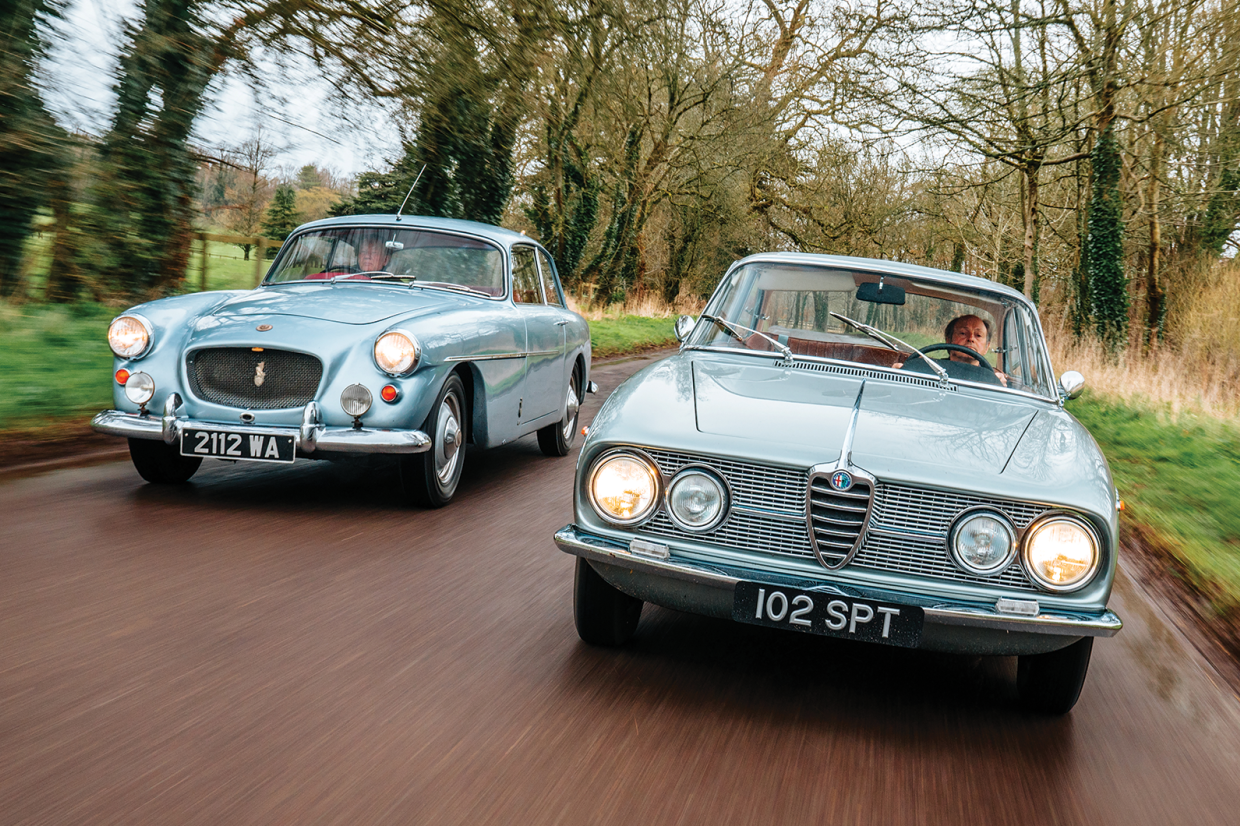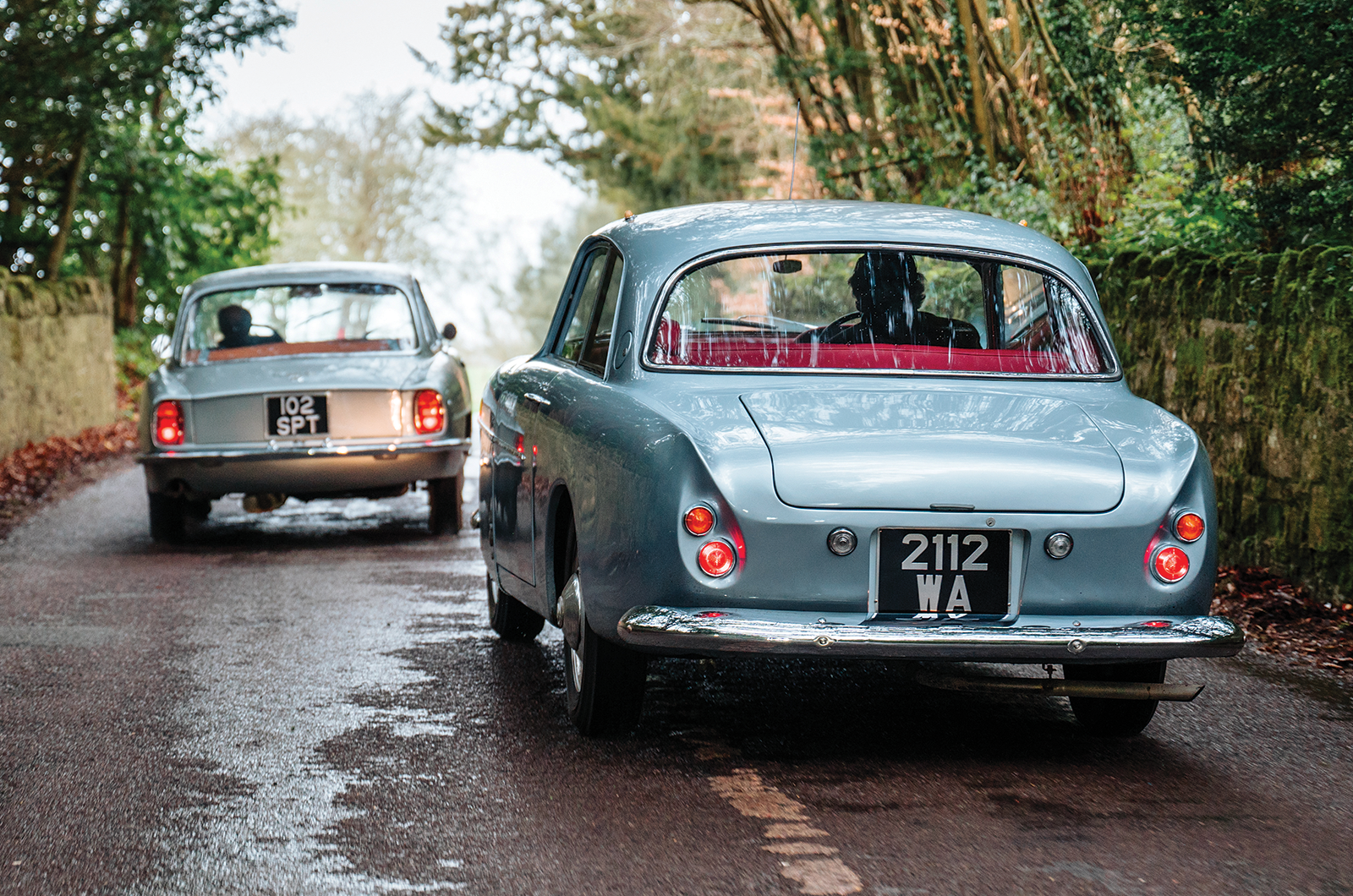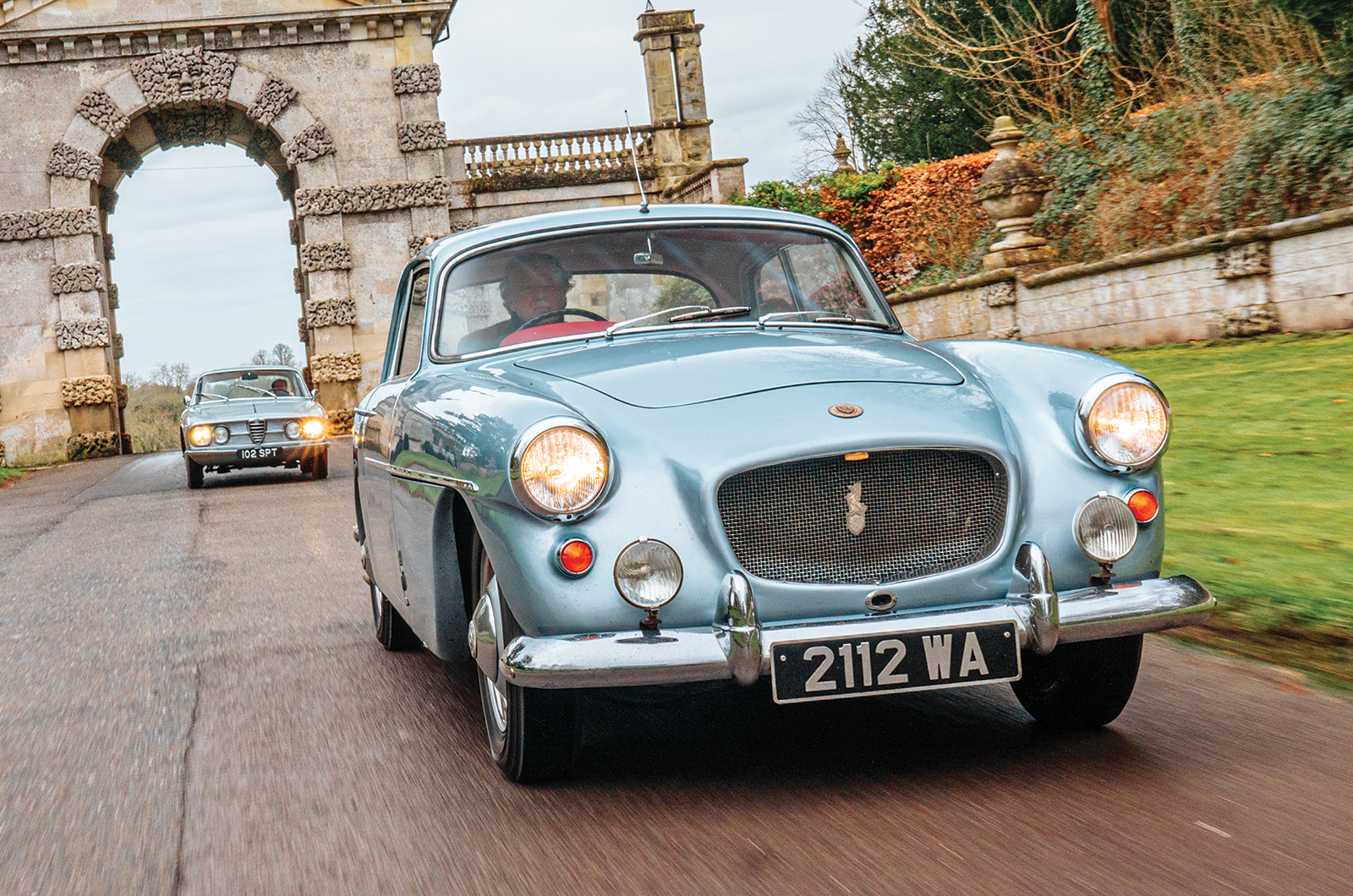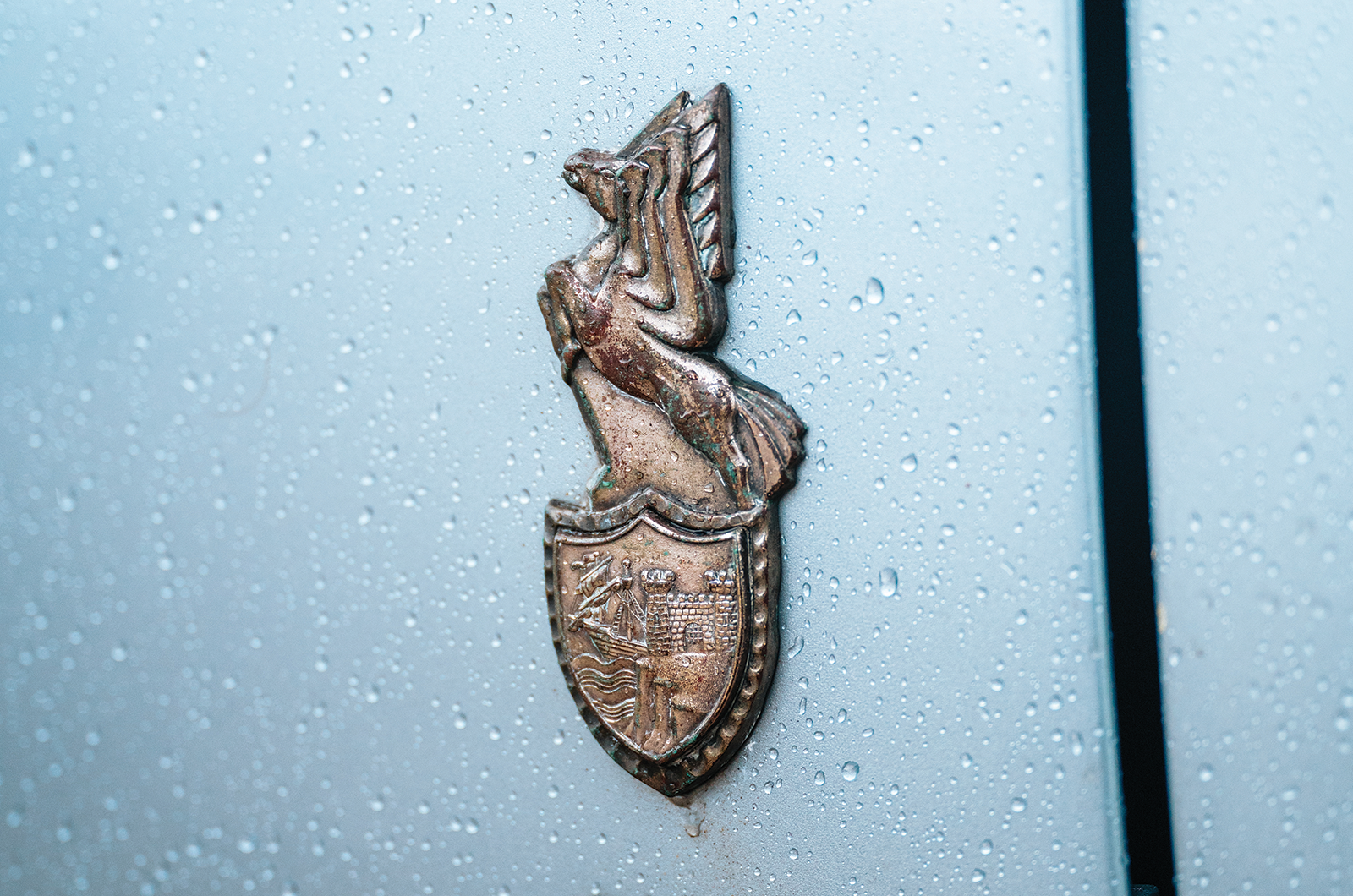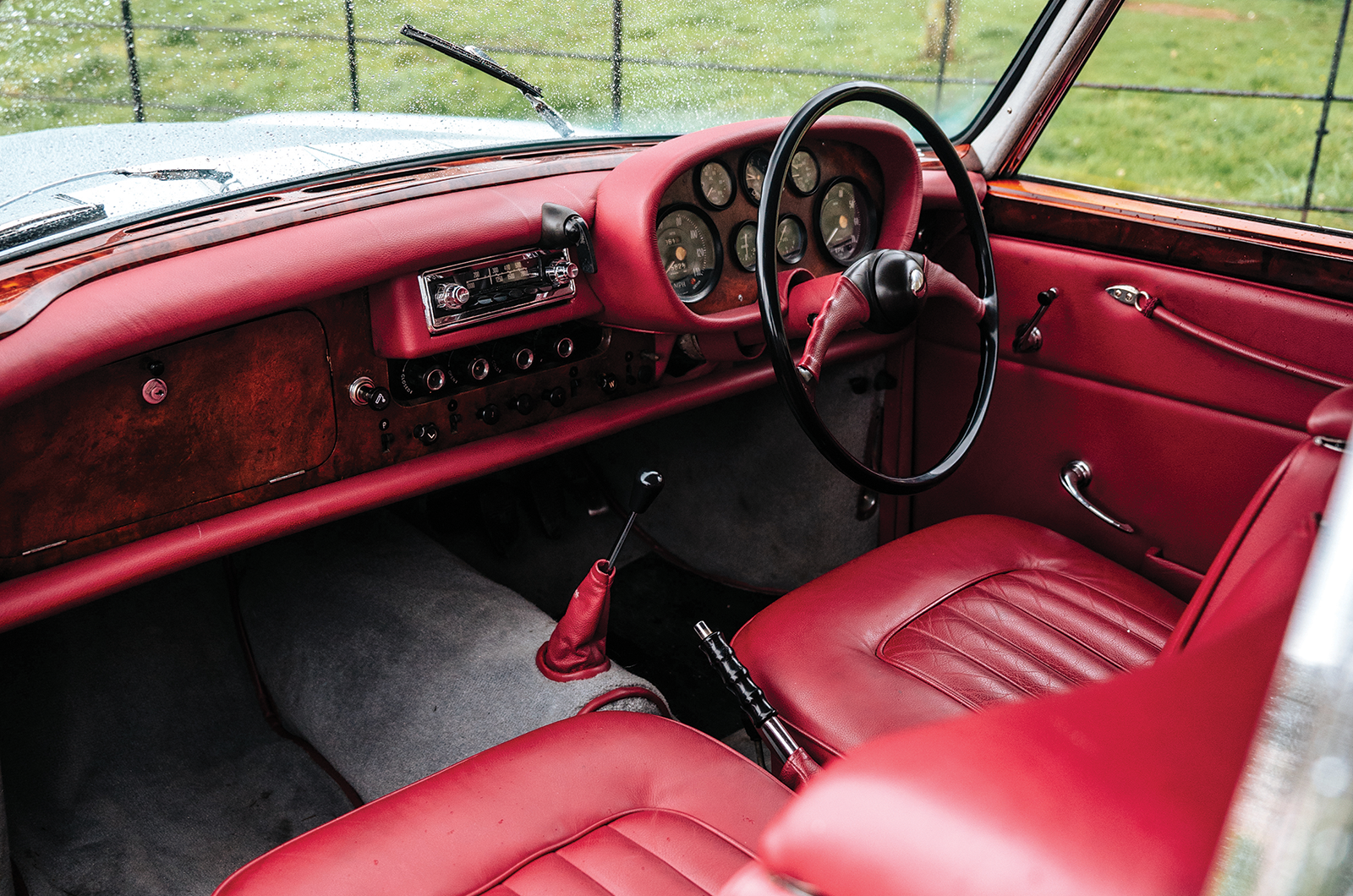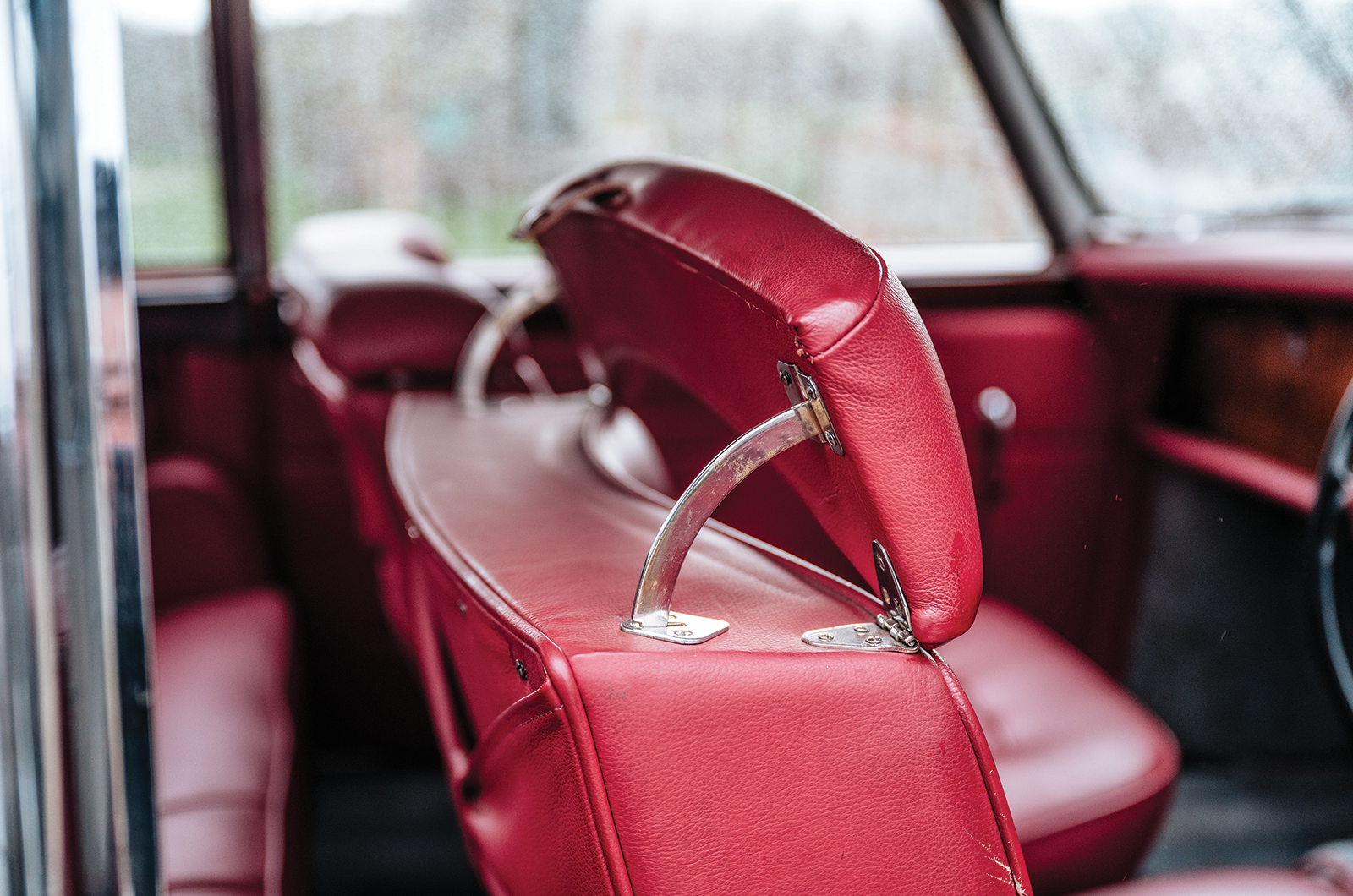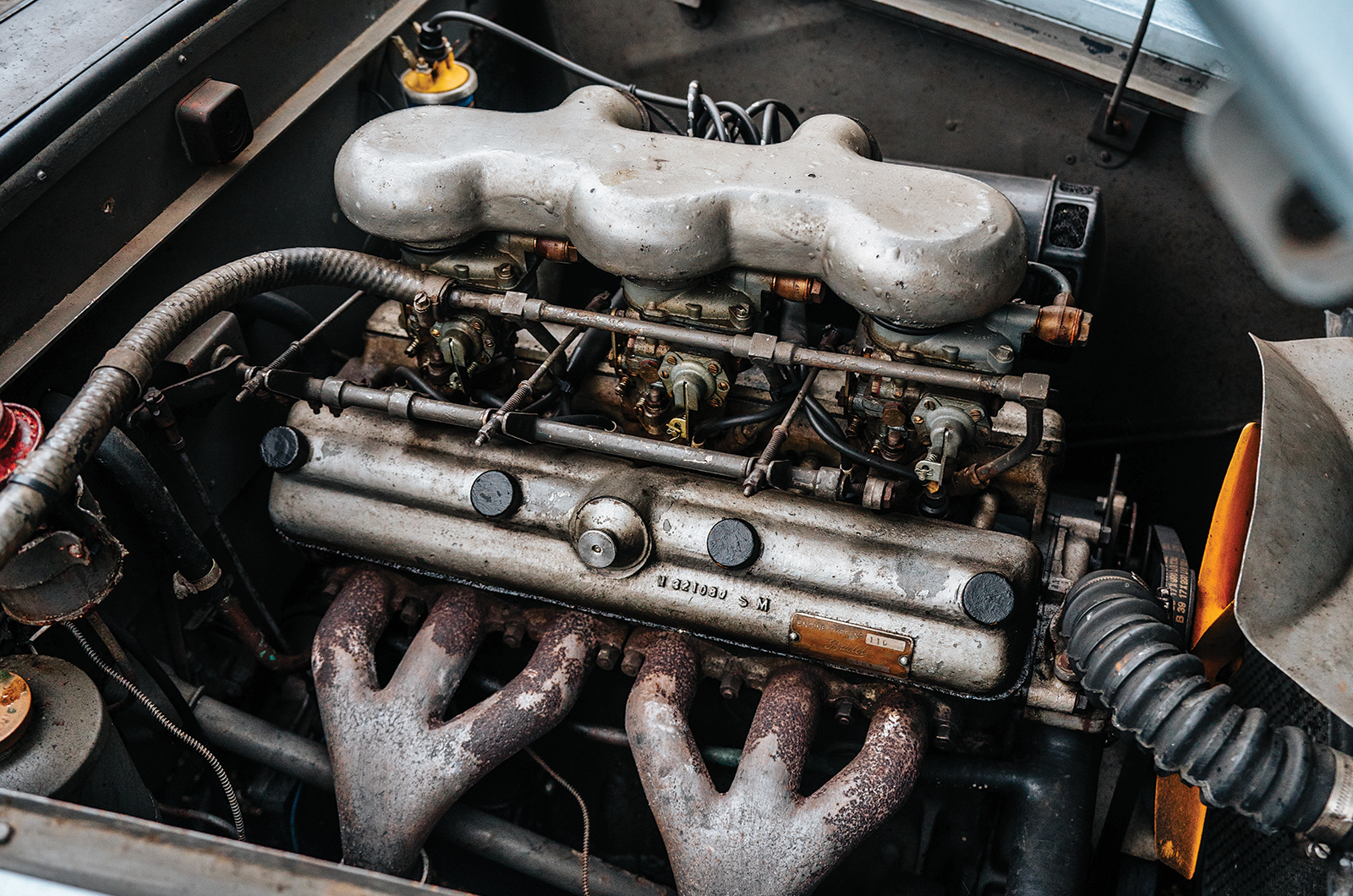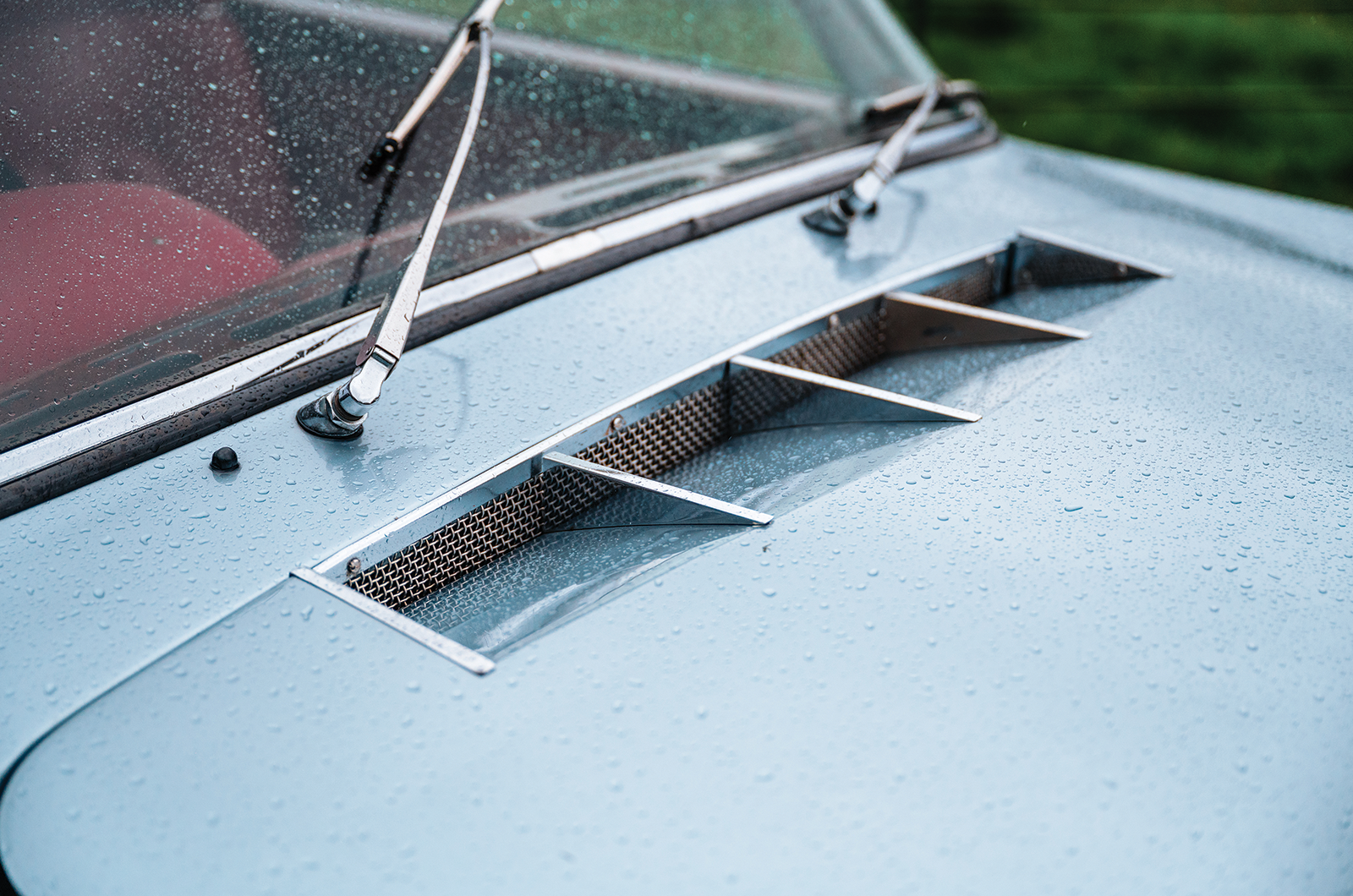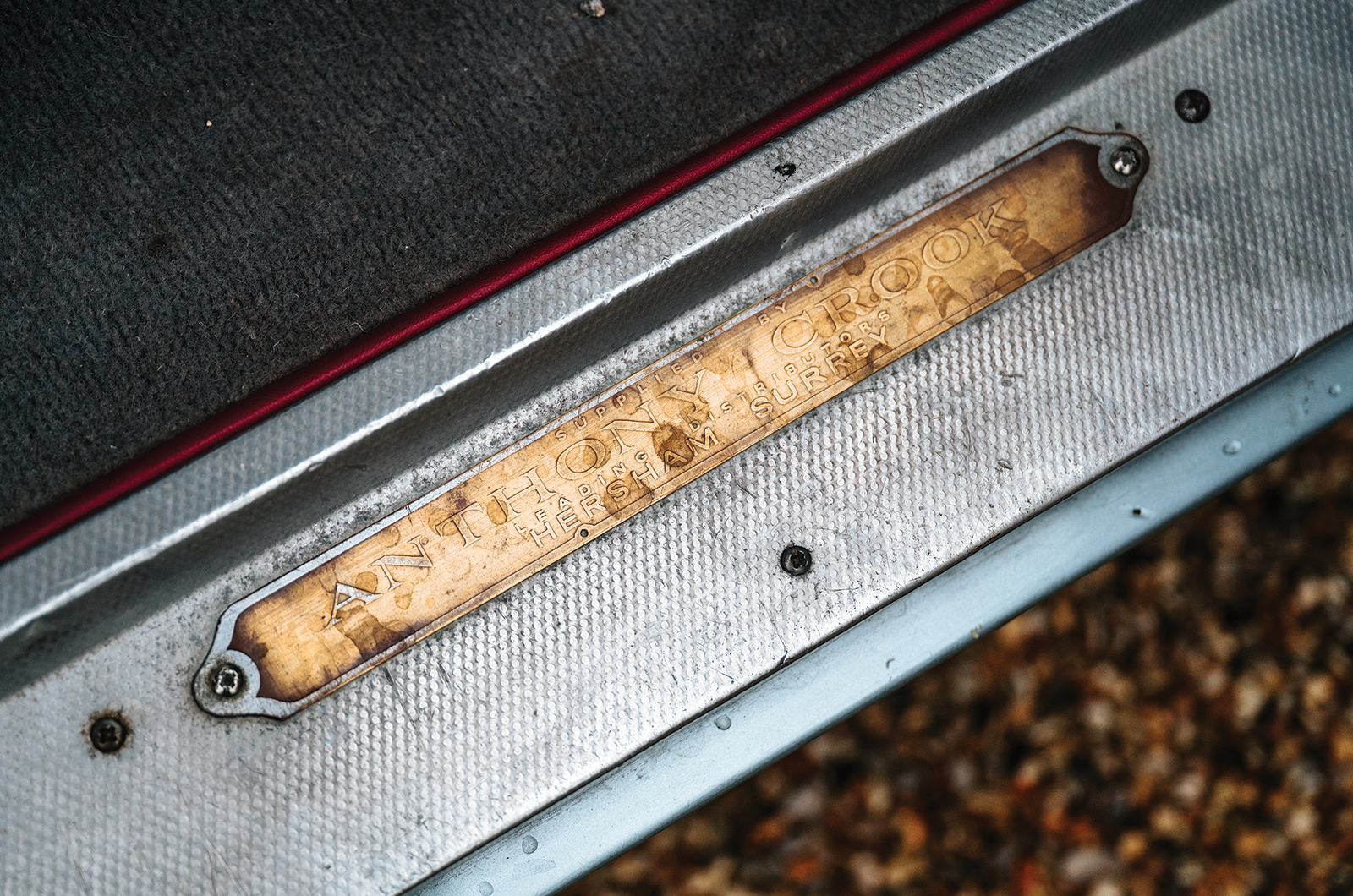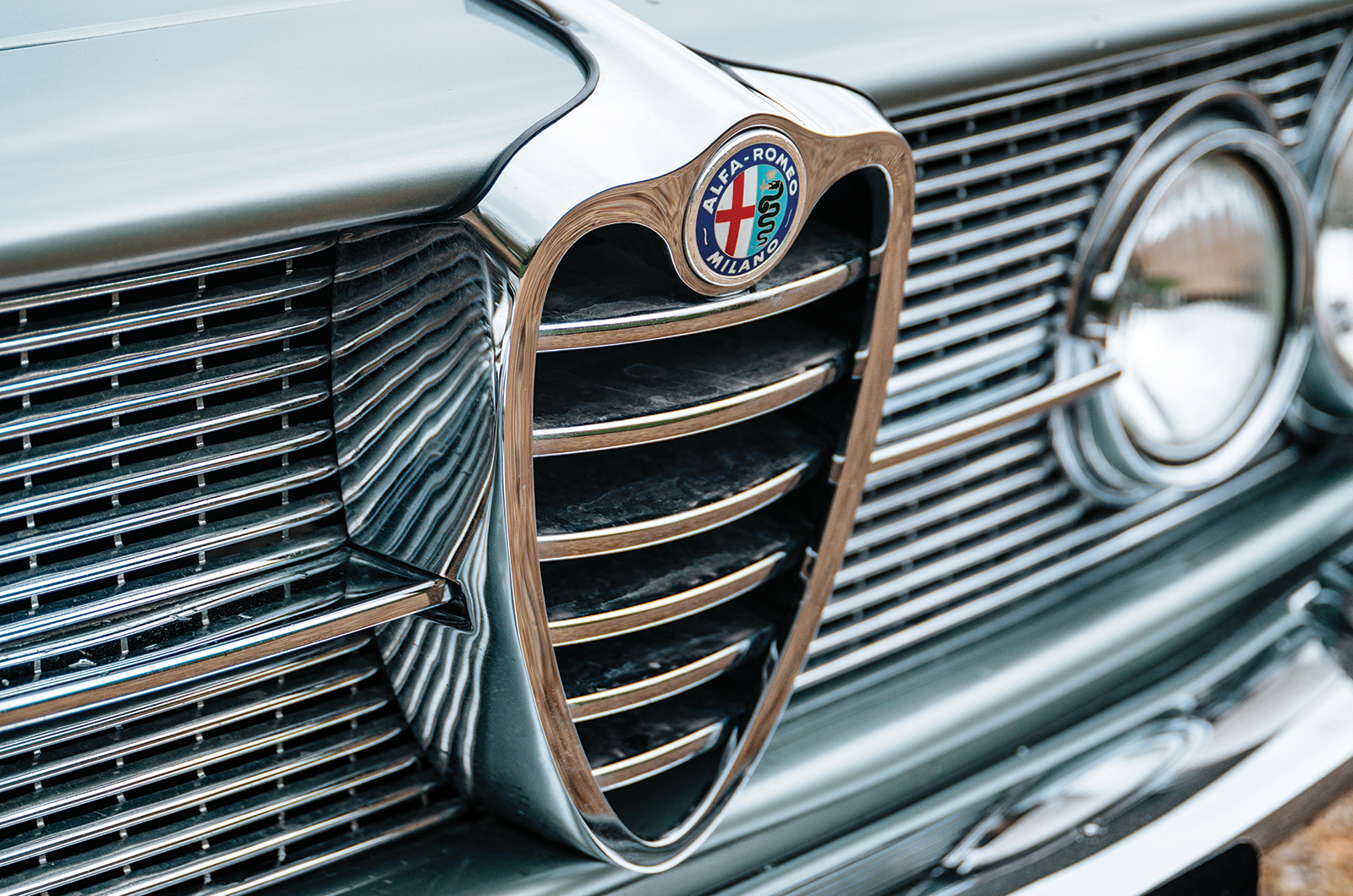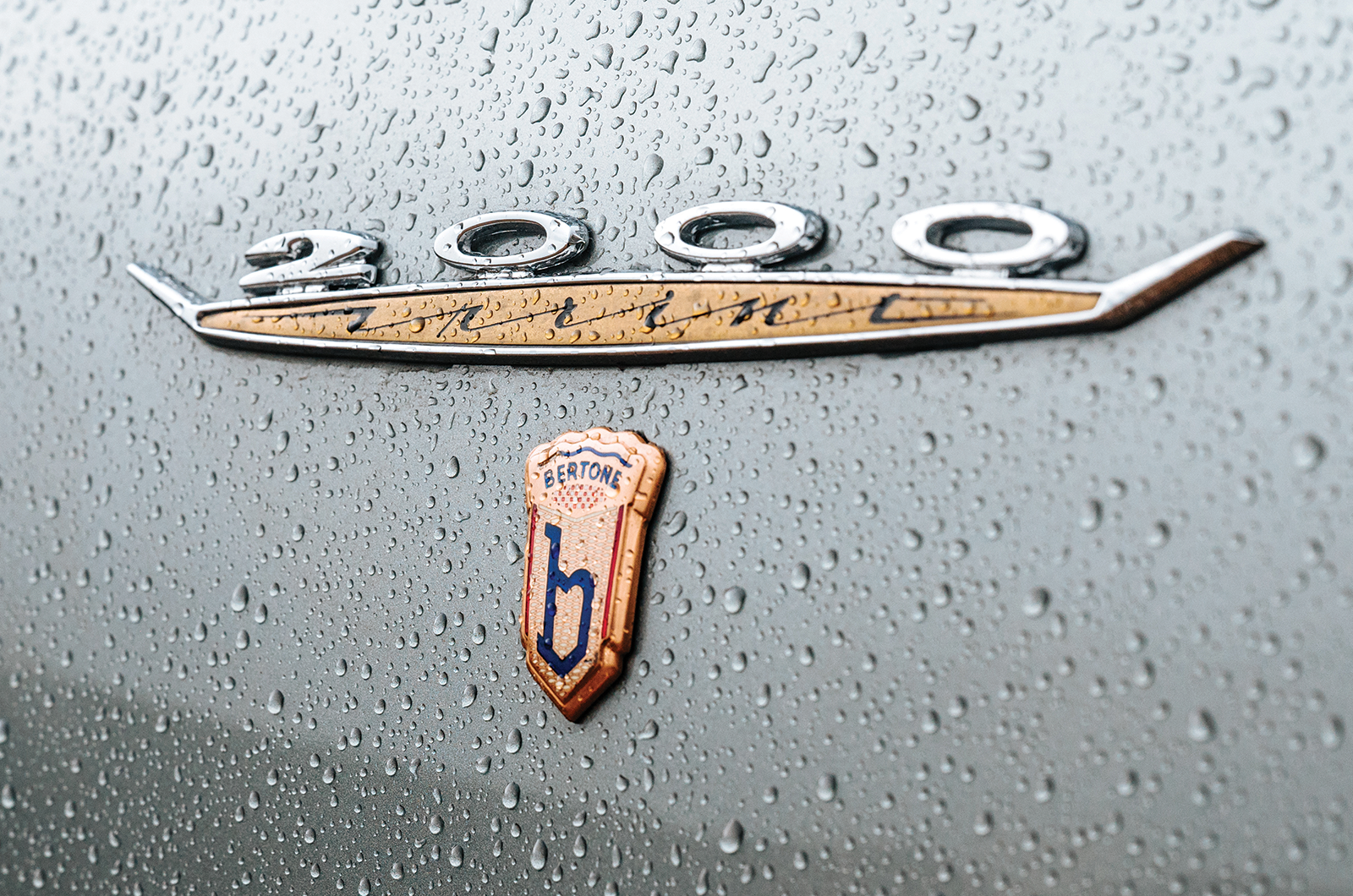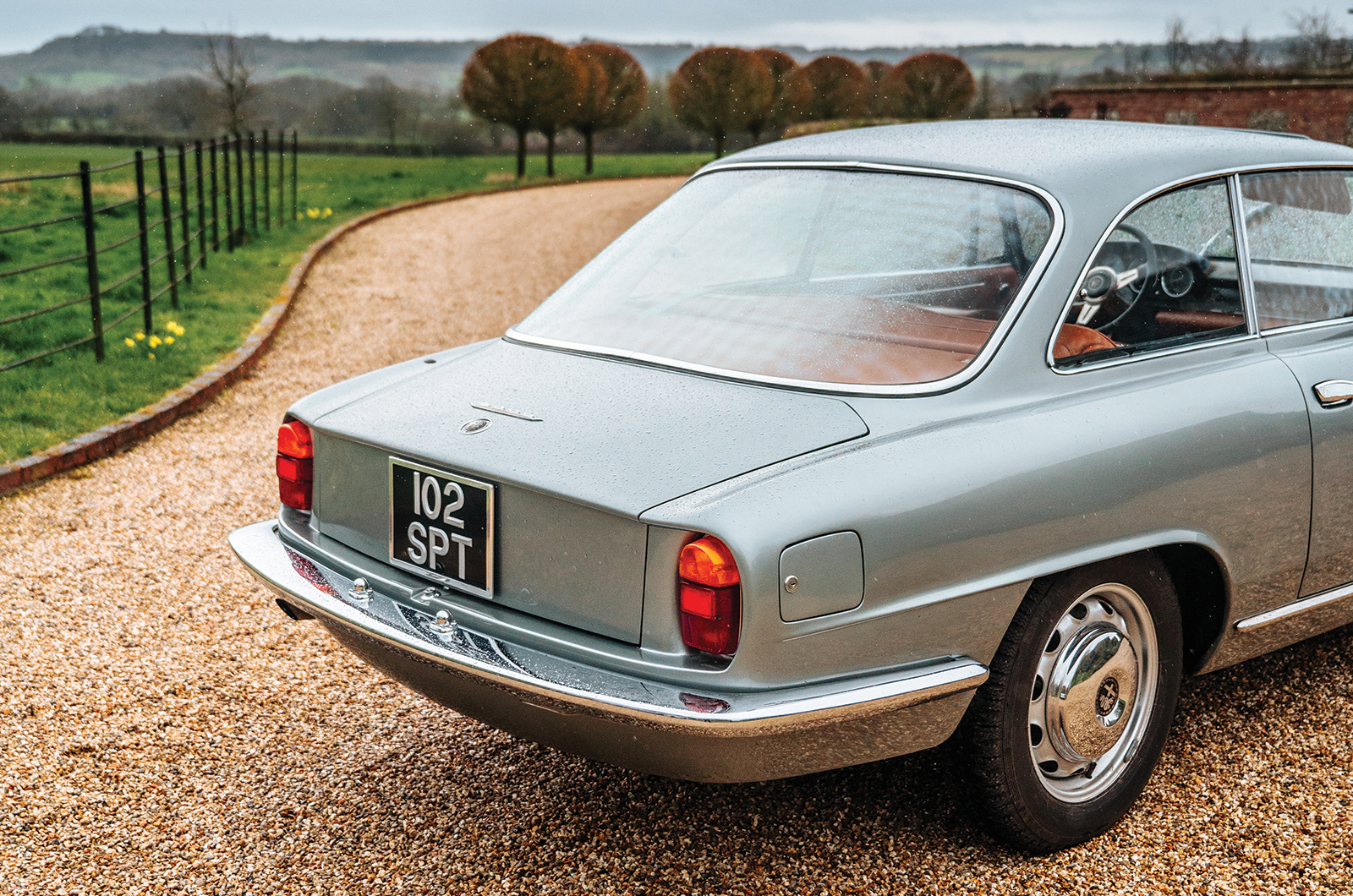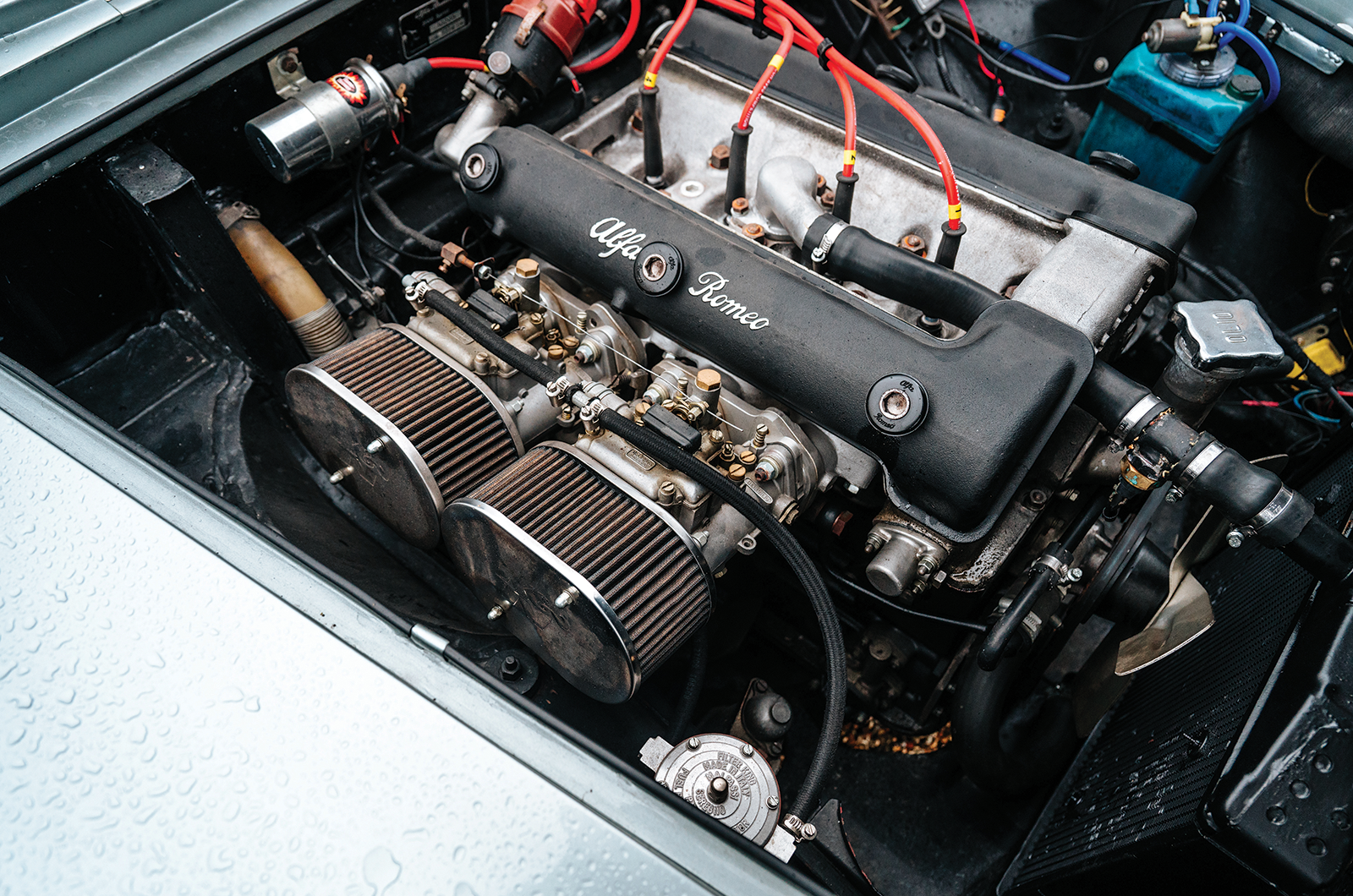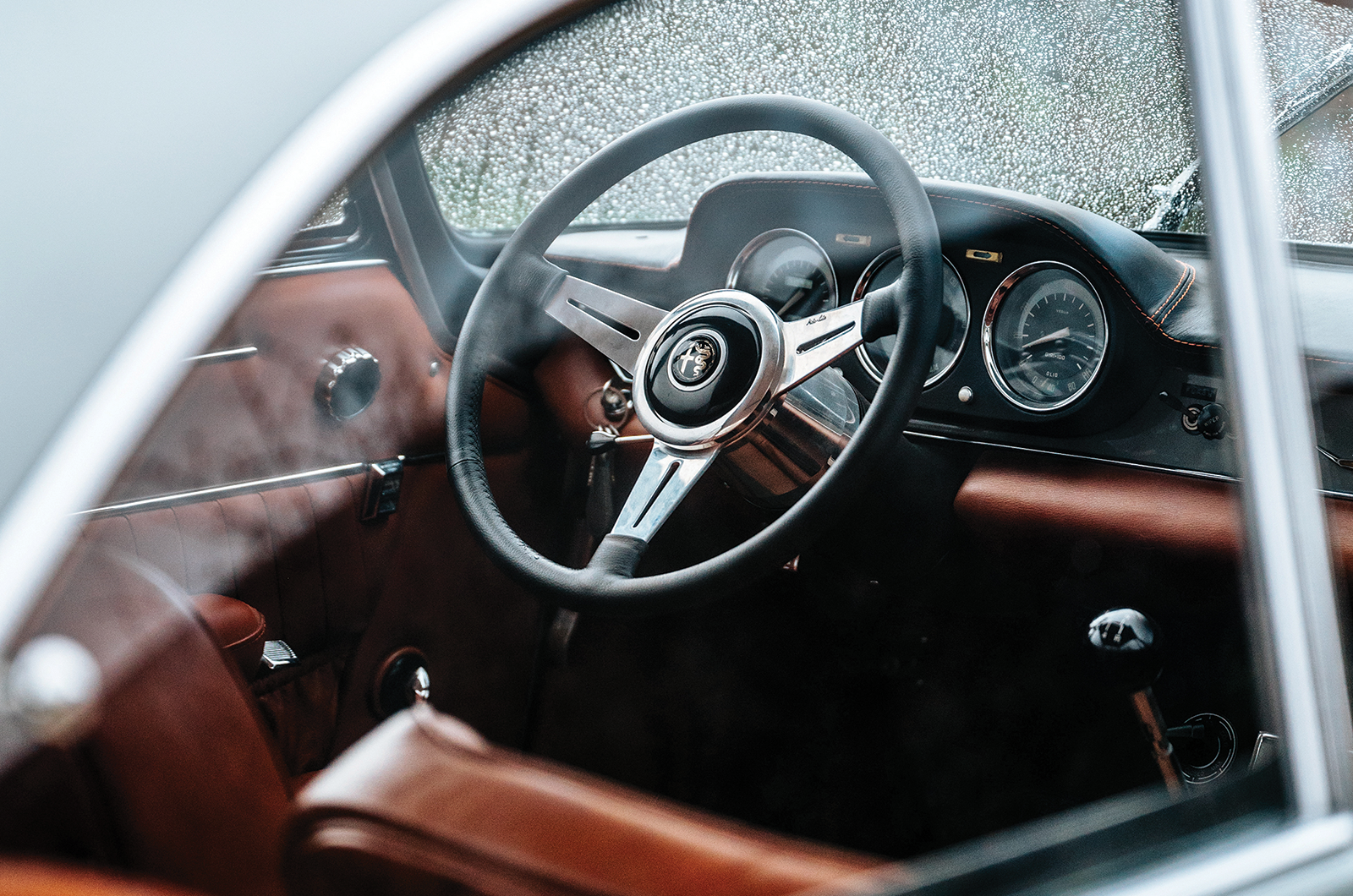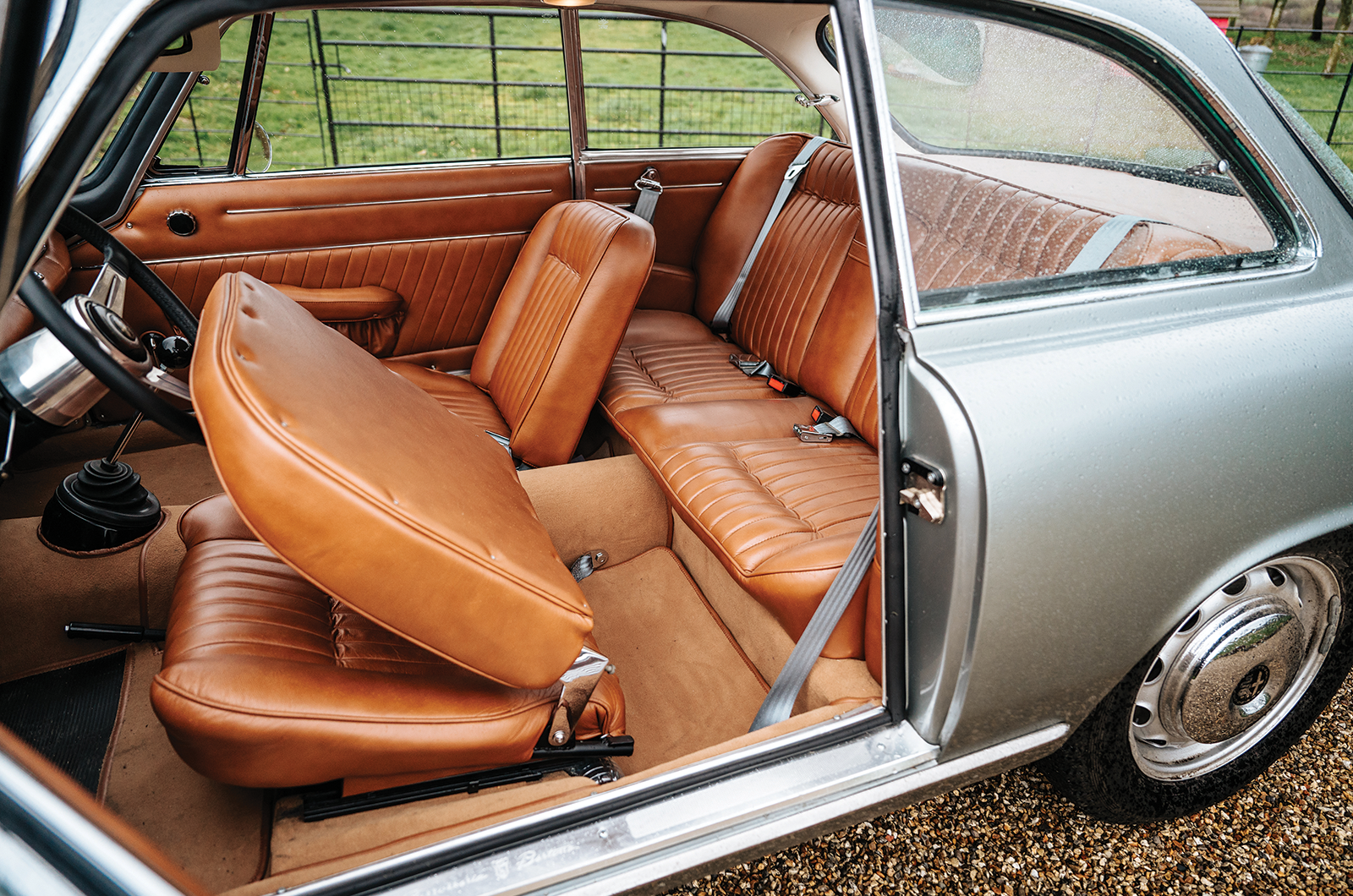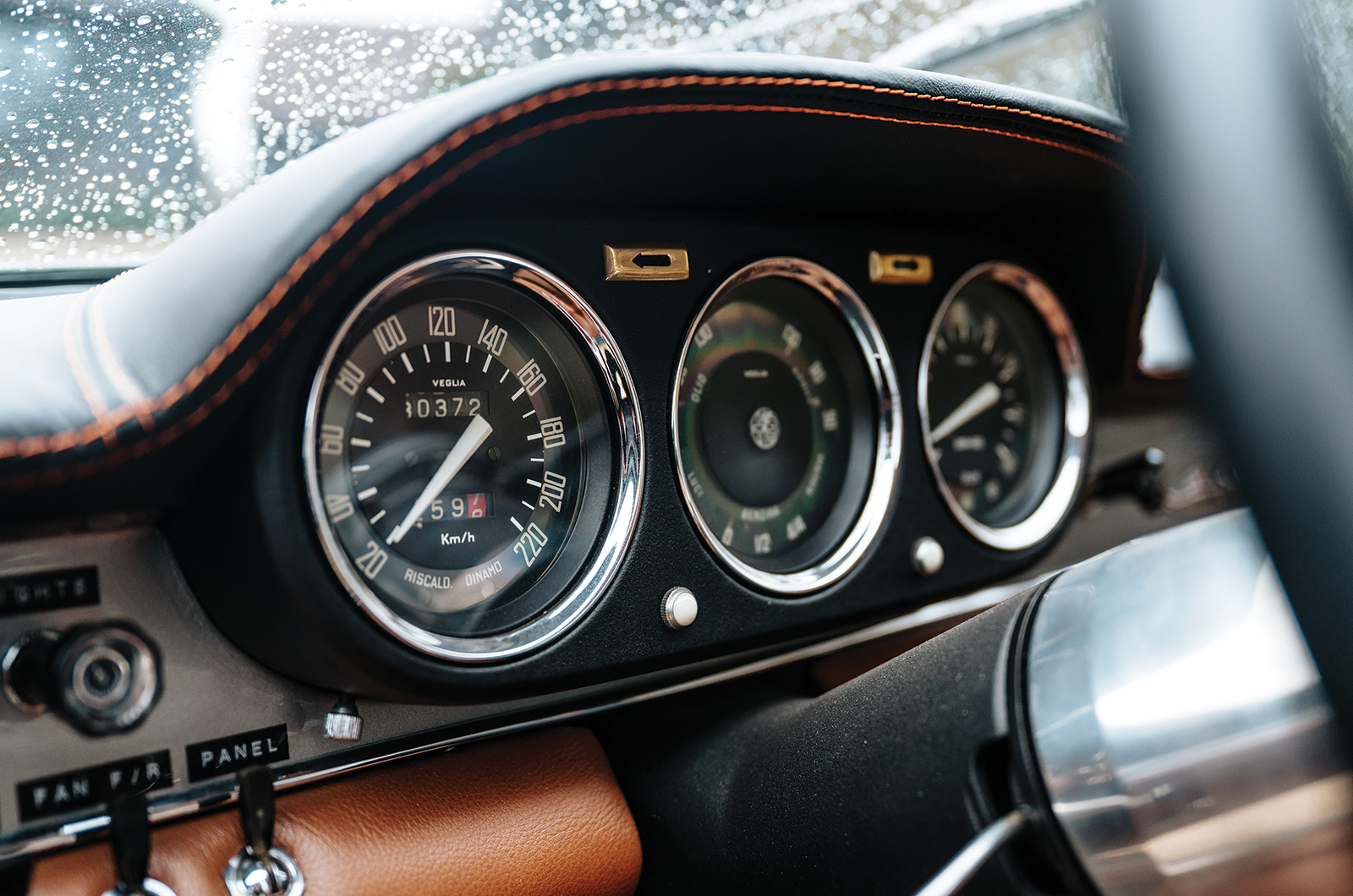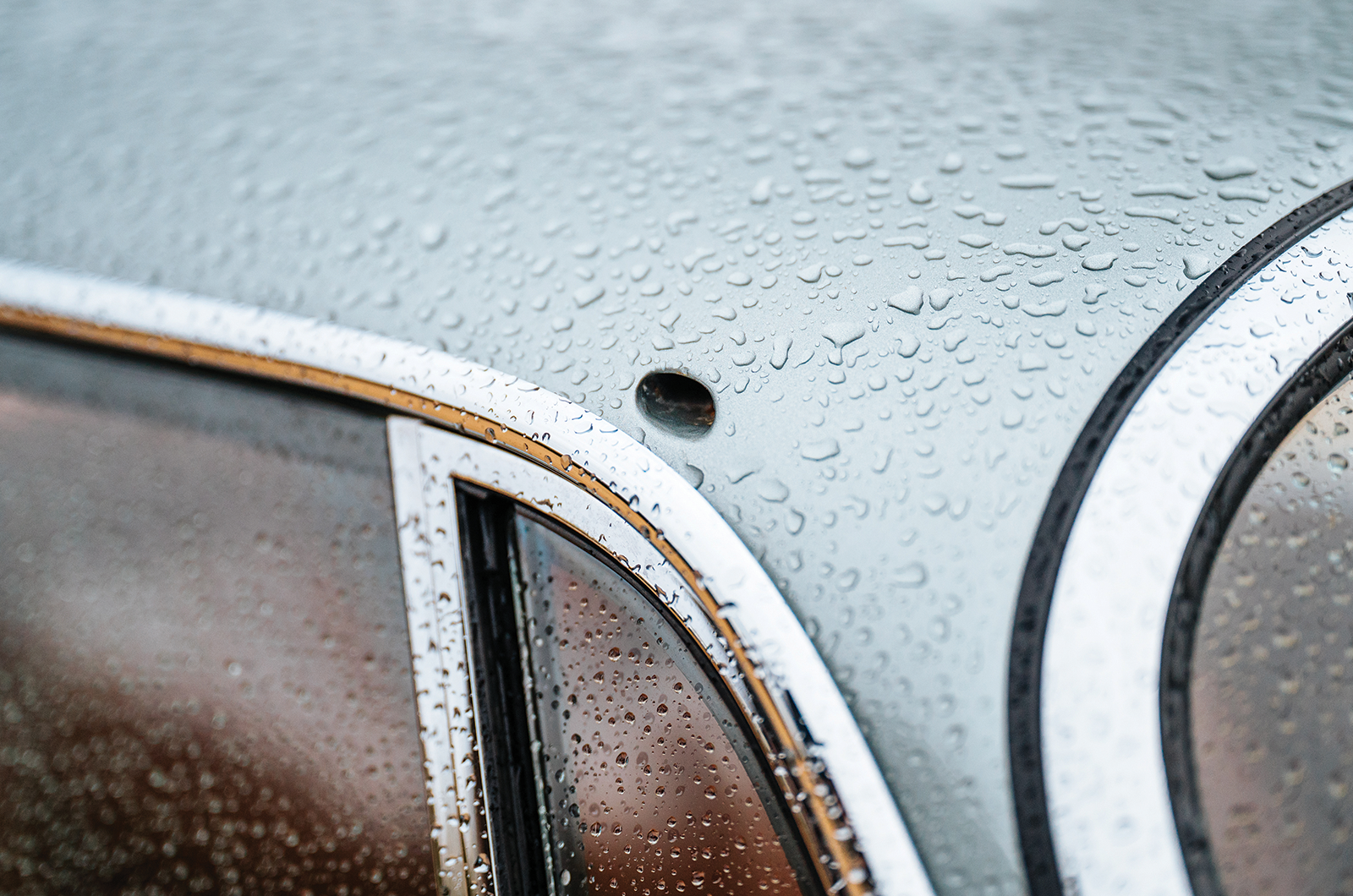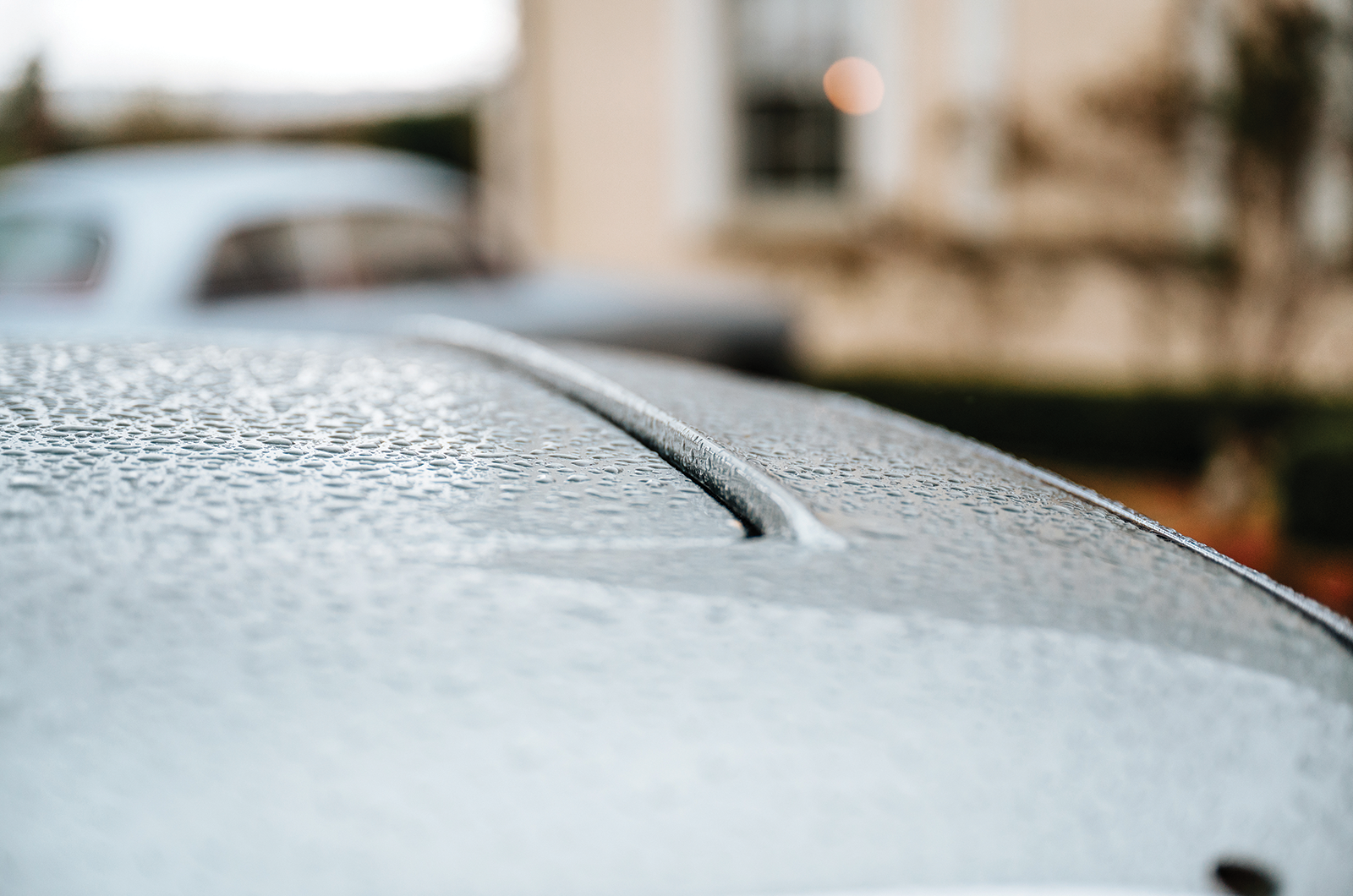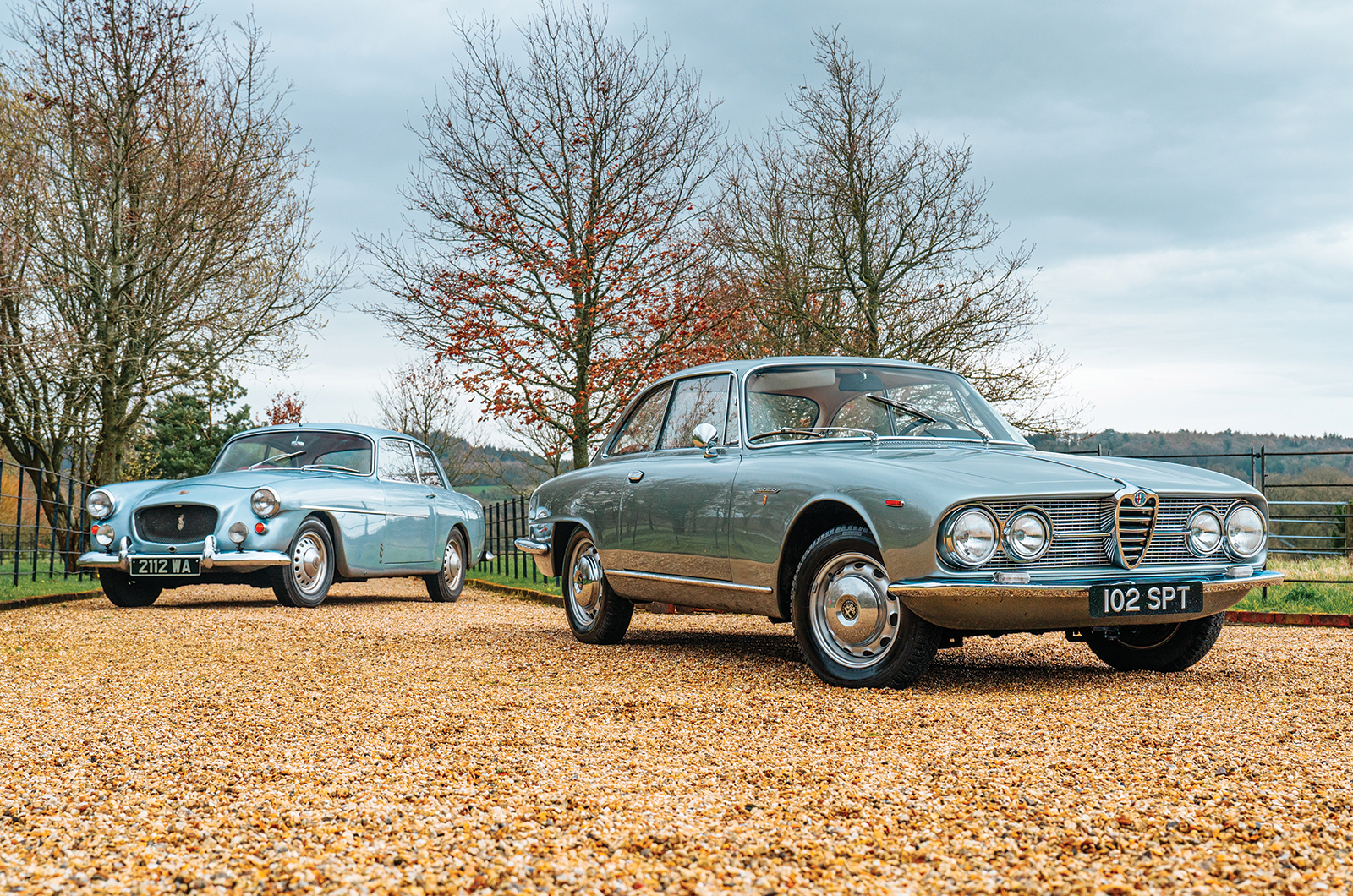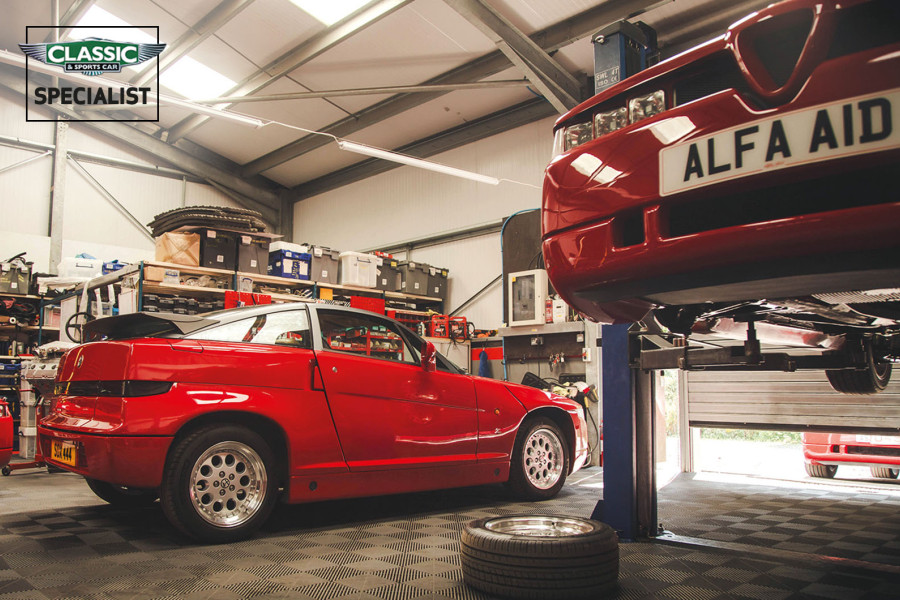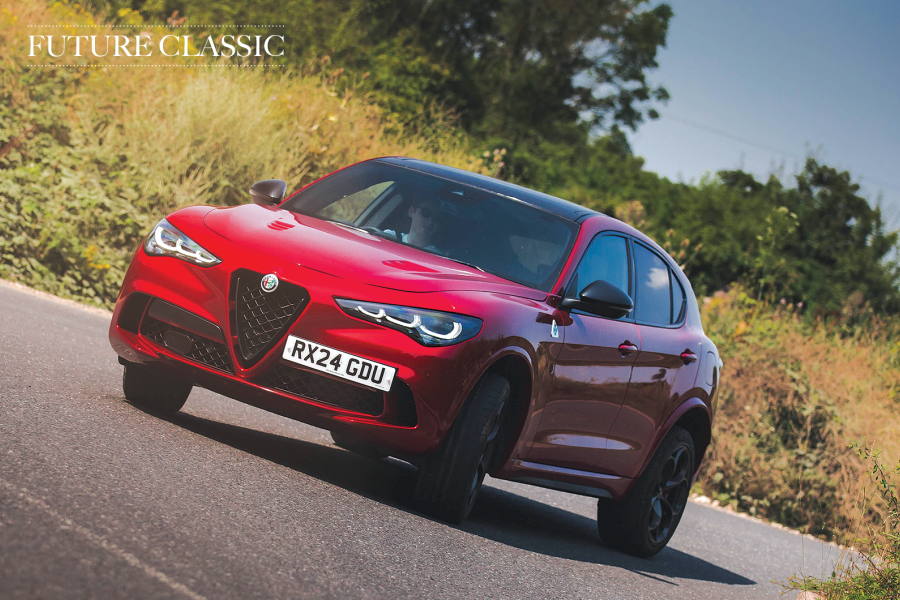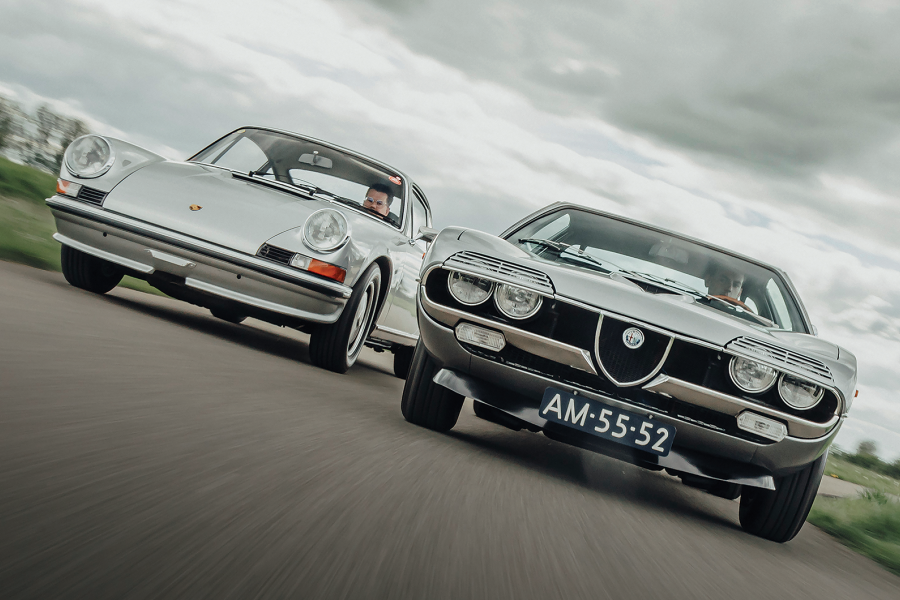Extend a digit on your right hand and you can flick into overdrive on a little chrome lever; change down to third and it automatically clicks out of overdrive.
A freewheel on first takes some of the effort out of low-speed driving, when you tend to notice the Bristol’s fairly hefty clutch.
The brakes, floor-hinged like the Alfa’s, need a meaty shove but perform well; the Sprint’s are less certain in feel, with too much travel.
The richly finished cabin is light and airy
Whipping easily and sweetly between top and fourth, both cars assert themselves well, and you scarcely miss the torque and power of their bigger-engined successors or the heavier and more ponderous steering that was a consequence of fitting bigger, heavier engines.
Like the Bristol, the Alfa Romeo’s steering is weighty at low speeds, but – also like the Bristol – has a usefully high-geared three turns between locks.
It feels light and direct on the move, with smooth castor return.
Although it’s a two-door, access to this Alfa Romeo’s rear seats is good
Both cars are more agile and stable than their age and size suggest, while sharing a similarly well-judged compromise between ride comfort and handling that must have been among the best available at the time.
Only the most vicious potholes catch out the live rear axles on these firm-riding but comfortable cars.
The Bristol is neutral in its cornering, but transmits some road shocks through the steering, which has no slop or mechanical stickiness.
It hangs on well on its skinny rubber and rolls less than the slightly softer Alfa.
There are modern-looking dials in the ’60s 2000 Sprint
The secure and highly controllable 406 has a weighty dignity that demands you drive it with something less than the abandon the Italian car seems to invite.
If the eager, agile 2000 Sprint is not quite in the 105-series coupé league for undistilled driver appeal, it’s not as far removed as you might think.
The 406 was the last six-cylinder Bristol.
Having been made a shareholder in the newly independent Bristol Cars Ltd, Tony Crook brought the retailing of the subsequent V8 models in-house through the Kensington High Street showroom.
The lighter, slightly more powerful Alfa is quicker on the road, despite a capacity deficit
Alfa was probably not even on Crook’s radar as a rival for Bristol custom.
Selling expensive, import-duty-loaded foreign machinery to British buyers was still hard work in those days; Alfa Romeo didn’t even have a factory-backed UK import set-up in 1960, preferring to let local distributor Thomson & Taylor sell its Giulietta range and a handful of 2000 saloons and Spiders.
There were no right-hooker Bertone Sprints until the introduction of the six-cylinder 2600 in 1962.
The Alfa’s graceful pillars are finished in chrome
Both the 406 and 2000 Sprint are transitional models between the more engineering-led values of the 1950s and the dash for additional urge, luxury and weight in the ’60s.
Production totals show how divergent were the ambitions of Filton and Arese: fewer than 200 Bristol 406s were laid down between 1958 and ’61, compared with 705 Sprints through to 1962.
If the 406 was the product of a company that increasingly saw car making as an inconvenience, you can see how Alfa may have been having similar thoughts about the future of low-volume models such as the 2000 Sprint, a car produced almost out of sentiment for a dwindling band of traditional customers who wanted a larger and more exclusive vehicle than the populist post-1955 Giulietta.
Elegant lines make the Alfa Romeo 2000 Sprint look much newer than the Bristol 406
As a close relative of the 1900, the 2000 Sprint was a hand-finished compromise between Alfa’s pre-war output and the truly mass-produced lightweight 101- and 105-series models upon which Alfa’s fortunes were based.
The highly prized Zagato versions get more coverage, but there is much to be said in favour of the once somewhat unloved Bristol 406.
Handier than a Bentley, less ubiquitous than a Jaguar and much less stuffy than a Daimler or an Alvis, the 406 was for well-heeled individualists who wanted a car that could cover ground quickly when guided by expert hands; one that was practical and distinguished but in no way ostentatious.
‘The pleasing use of veneers and quality leather gives the 406 a more patrician feel than the Alfa’
Certainly, there are better Alfa Romeos than the 2000 Sprint, yet it has a charm separate from that of both the Giulietta and Giulia, and it adds intrigue.
I feel drawn to its beauty and glamour, although not quite enough to displace the 406 as one of my preferred takes on a favourite marque.
Images: Jayson Fong
Thanks to: Richard Hackett of SLJ Hackett for the Bristol; Richard Carp of HC Classics for the Alfa Romeo
Factfiles
Alfa Romeo 2000 Sprint
- Sold/number built 1960-’62/705
- Construction steel monocoque
- Engine all-alloy, dohc 1975cc ‘four’, twin Weber carburettors
- Max power 115bhp @ 5300rpm
- Max torque 112Ib ft @ 3500rpm
- Transmission five-speed manual, RWD
- Suspension: front independent, by double wishbones rear live axle, radius arms, triangulated link; coil springs, telescopic dampers f/r
- Steering Marles worm and roller
- Brakes finned alloy drums
- Length 15ft (4572mm)
- Width 5ft 7in (1702mm)
- Height 4ft 7in (1397mm)
- Wheelbase 8ft 5in (2565mm)
- Weight 2950Ib (1338kg)
- 0-60mph 14 secs
- Top speed 112mph
- Mpg 18-25
- Price new £3000
- Price now £50-75,000*
Bristol 406
- Sold/number built 1958-’61/174
- Construction alloy body over tubular steel frame, steel box-section chassis
- Engine iron-block, alloy-head, ohv 2216cc straight-six, triple Solex carburettors
- Max power 105bhp @ 4700rpm
- Max torque 129Ib ft @ 3000rpm
- Transmission four-speed manual with overdrive on top, RWD
- Suspension: front independent, by upper wishbones, transverse leaf spring, anti-roll bar rear live axle, torsion bars, torque arm, Watt linkage; telescopic dampers f/r
- Steering rack and pinion
- Brakes discs, with servo
- Length 16ft 4¼in (4978mm)
- Width 5ft 8in (1727mm)
- Height 5ft (1524mm)
- Wheelbase 9ft 6in (2896mm)
- Weight 3010Ib (1365kg)
- 0-60mph 14 secs
- Top speed 100mph
- Mpg 20-26
- Price new £4244
- Price now £40-60,000*
*Prices correct at date of original publication
Enjoy more of the world’s best classic car content every month when you subscribe to C&SC – get our latest deals here
READ MORE
Jaguar Mk2 2.4 vs BMW 1800 vs Alfa Romeo 1300 TI: Continental challenge
Alfa Romeo 1900 Super vs 2600 Berlina: a brave new world
Six of the best: AC Greyhound vs Bristol 406 Zagato
Martin Buckley
Senior Contributor, Classic & Sports Car
